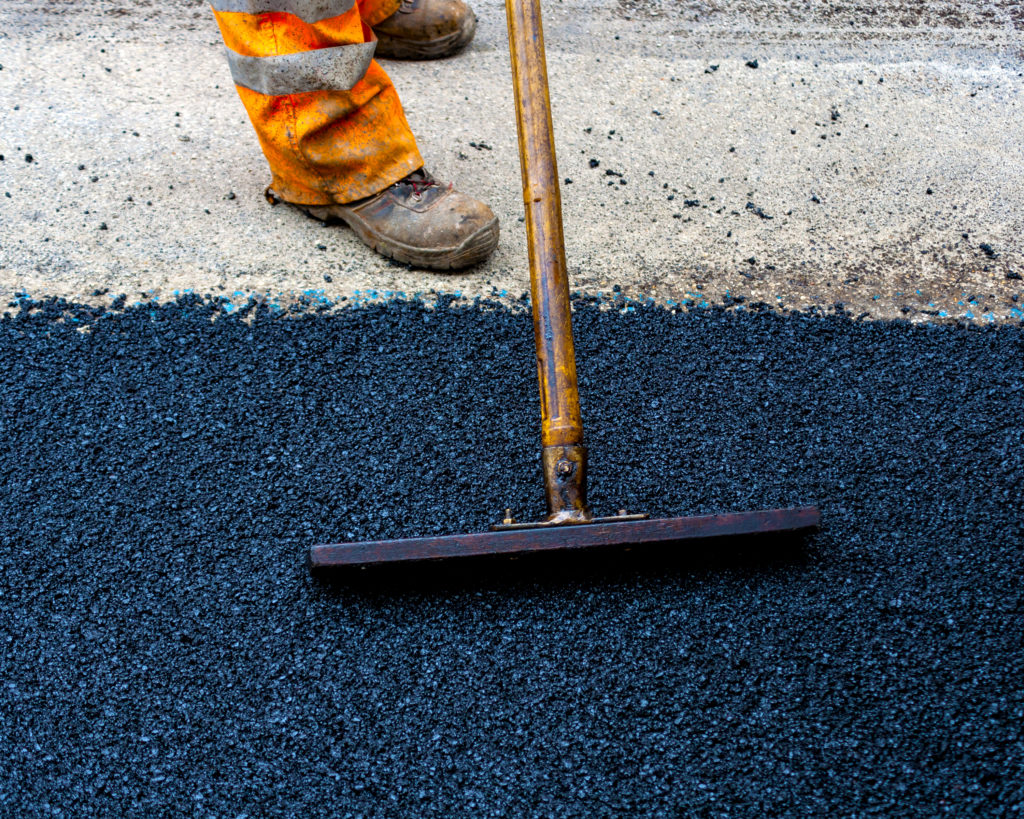Hot Mix Asphalt: The Structure for Safe and Secure Angled Parking Lots
Hot Mix Asphalt: The Structure for Safe and Secure Angled Parking Lots
Blog Article
Unlocking the Secrets of Hot Mix Asphalt Innovation
Exploring the midsts of warm mix asphalt modern technology reveals a globe where specific solutions and thorough procedures assemble to shape our roads and infrastructure. The fusion of fillers, accumulations, and binders isn't simply a building task but a strategic orchestration of durability and efficiency. As we peer right into the intricate dance of components, a tapestry of strength and sustainability unravels. What exists below this surface of asphaltic proficiency, and what secrets wait to be unveiled in the world of leading innovations?
Importance of Warm Mix Asphalt
Warm Mix Asphalt plays a crucial role in contemporary facilities advancement due to its longevity and cost-effectiveness. As the most generally used leading material for roadways, highways, and auto parking whole lots, Warm Mix Asphalt supplies an array of advantages that add to its value in construction projects.
The resilience of Hot Mix Asphalt stems from its composition, which includes accumulations, binder, and filler products that are meticulously picked and blended to satisfy certain efficiency demands. This accurate combination causes a solid and versatile pavement that can withstand frequent usage without substantial deterioration. Hot Mix Asphalt is 100% recyclable, further boosting its sustainability and ecological benefits. Overall, the relevance of Warm Mix Asphalt in infrastructure development can not be underrated, as it remains to be a foundation of modern building and construction methods.
Components of Asphalt Mixes
The structure of asphalt blends is composed of carefully chosen aggregates, binder, and filler products that are critical for achieving particular performance demands. Accumulations are the key component of asphalt mixes, offering stamina and security. The binder, commonly asphalt or asphalt concrete, holds the accumulations with each other and gives flexibility and resilience to the mix.
The combination and proportion of these elements play a considerable function in identifying the high quality and performance of the asphalt mix. Engineers thoroughly develop the mix to satisfy particular requirements, considering elements like traffic volume, climate conditions, and pavement life-span. Correct option and harmonizing of aggregates, binder, and fillers are vital for producing durable, resilient asphalt pavements.
Mixing and Production Techniques

As soon as the accumulations are picked, the binder, usually asphalt concrete, is contributed to bind the products with each other. The binder's top quality and amount dramatically influence the mix's versatility, stamina, and resistance to ecological variables. In addition, fillers like moisturized lime or Portland cement might be included to enhance details attributes of the asphalt mix, such as its workability or wetness resistance.
Throughout production, the accumulations and binder are warmed, usually in between 250-325 ° F(121-163 ° C ), to help with mixing and make certain correct finishing of the aggregates. The blending procedure should be thorough to attain a homogeneous combination that promotes the desired performance features of the asphalt. Numerous strategies, such as set mixing or drum blending, are used to attain constant and premium asphalt mixes for building projects.
Elements Affecting Asphalt Efficiency
Factors influencing asphalt efficiency incorporate a range of variables that affect the durability, durability, and general top quality of asphalt pavements. One essential aspect is the top quality of products used in the asphalt mix.

Design considerations, such as pavement thickness and drain, check it out are necessary in making certain the long-term performance of the asphalt pavement. By very carefully taking into consideration these specialists, engineers and elements can optimize asphalt performance and enhance the service life of sidewalks.
Lasting Practices in Asphalt Innovation

WMA permits for the production and placement of asphalt mixes at lower temperatures contrasted to standard hot-mix asphalt, resulting in lowered power usage and greenhouse gas exhausts. The top article usage of porous asphalt blends can assist minimize stormwater drainage issues by permitting water to infiltrate via the pavement and into the ground, advertising all-natural water filtration and charge procedures.
Verdict
Finally, hot mix asphalt technology plays a critical duty in modern infrastructure development due to its sturdiness and cost-effectiveness. By very carefully stabilizing elements, utilizing appropriate mixing methods, and thinking about different elements, engineers can develop high-quality asphalt mixes that withstand rush hour lots and rough climate problems. Accepting sustainable practices, such as making use of recycled products and warm-mix modern technologies, even more boosts the ecological kindness of asphalt technology.
Mixing and production methods in hot mix asphalt technology entail the specific combination and processing of accumulations, binder, and fillers to produce a high-performance and durable asphalt mix.Variables affecting asphalt performance incorporate a variety of variables that impact the resilience, longevity, and total high quality of asphalt pavements. Lasting practices in asphalt modern technology include various efforts aimed at minimizing the environmental influence of asphalt production and paving procedures. By integrating redeemed asphalt sidewalk (RAP) and recycled asphalt roof shingles (RAS) into new asphalt blends, the market can significantly minimize the consumption of raw materials and power, while also lowering landfill waste.
WMA permits for the production and placement of asphalt blends at lower temperature levels compared to typical hot-mix asphalt, resulting in decreased power consumption and greenhouse gas discharges.
Report this page